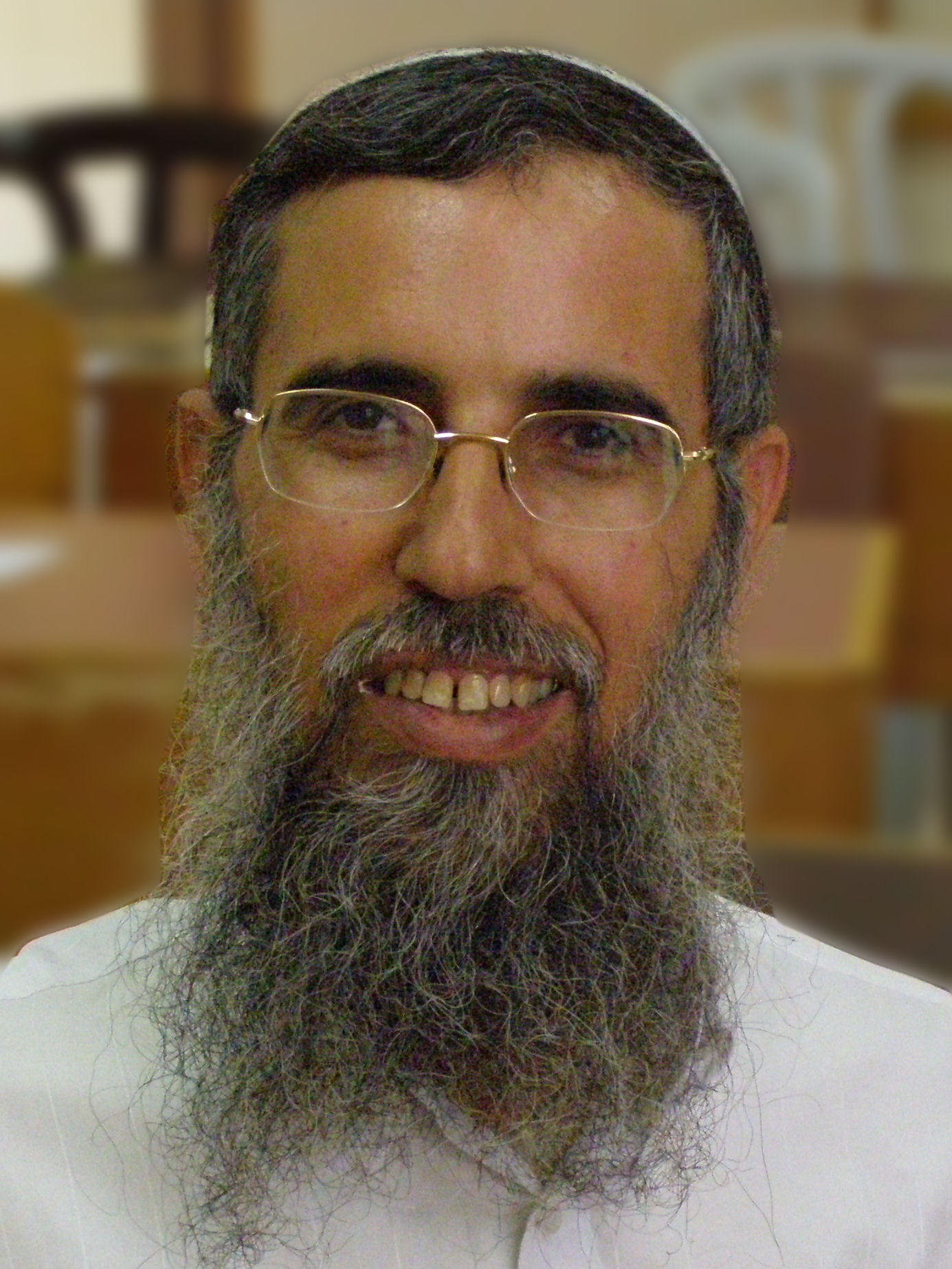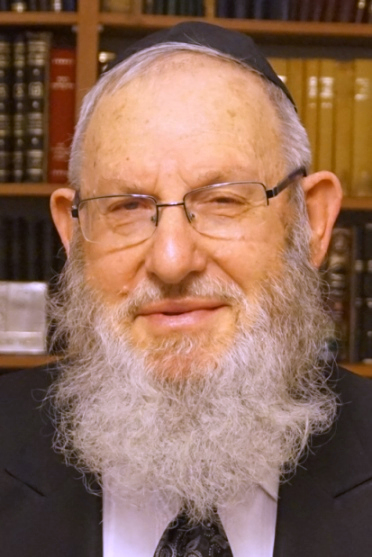The Sacrifice of Intellectual Honesty
הרב מנחם מנדל בלכמן
The Beit Hamikdash is the house that we built, and hope to rebuild, for G-d. However, it is more than just this. The Rambam writes (Hil. Beit Habechira 1:1):
It is a positive commandment to make a House for G-d, designed for the purpose of offering sacrifices in it and going there to celebrate three times a year, as it says, "They shall make a Sanctuary for Me."
The Rambam asserts here the dual role of the Mikdash. On the one hand, the Rambam writes, we are to build "a House for G-d." But, he continues, "for the purpose of offering sacrifices in it and going there to celebrate." The purpose of the Mikdash is, additionally, for his people to visit and offer sacrifices there.
In the following chapter (2:1), the Rambam explores the precise significance of this additional role, in which the People of Israel use the Mikdash as a place to bring their sacrifices:
The altar has an extremely precise location. It is never to be changed from its place, as it says, "This is the Altar of Burnt-offering for Israel." Also, on the Temple Mount Yitzchak Avinu was bound, as it says, "Go to the land of Moriah."
The altar, reflecting the sacrificial component of the Mikdash, is relegated to a specific location within the Temple Mount. This location attains significance through its identification with the place of the akeida.
This is not the only ancestral association. In the subsequent halacha (2:2), the Rambam continues to name a series of additional significances to the location:
It is an accepted tradition that the place where David and Shlomo built the altar on the threshing floor of Aravna Heyevusi is the place where Avraham built the altar and bound Yitzchak on it. It is also the place where Noach built [an altar] when he left the ark, and it is the altar on which Kayin and Hevel sacrificed. On it Adam offered a sacrifice when he was created, and from there he was created, as our Sages said, "Adam was created from the place of his atonement."
Looking over this additional list, however, we note that the connection with the place of the akeida is repeated. In order to determine the significance of the repetition, we first need to take note of the difference in formulation. In the first halacha, the phrase is "Yitzchak was bound in the Mikdash", while in the second, the Rambam says "the place where Avraham built the altar and bound Yitzchak on it." In the former, the focus is on Yitzchak, as a passive actor, while in the latter case, Avraham bears the focus, actively building the altar and binding on it his first born son.
At first glance, we could formulate the distinction as follows. On the one hand, the location represents the passive submission of Yitzchak, while, on the other hand, the location highlights Avraham's active service before G-d. However, an insight of the Mei Hashiloach (Vayeira, s.v. vehaelokim) shows us that the difference is far more profound:
The test [of the akeida] is not attributed to Yitzchak, because he trusted Avraham that it was from G-d, and it was not such a test. However, for Avraham it was a test, since the command was not explicit to him.
The difference between the performances of Avraham and Yitzchak resides in the respective levels of certainty regarding G-d's actual command. The less certainty there is, the greater the test.
The lack of certainty on Avraham's part is not immediately obvious. After all, did not G-d tell him explicitly, "Please take your son, your only son,whom you love - Yitzchak - and go to the land of Moriah; bring him up there as an offering upon one of the mountains which I shall tell you." (Bereishit 22:2) Upon further inspection, however, G-d's request is not as clear as it seems. Rashi already hints to this, when he comments (s.v. vehaaleihu): G-d did not tell him, "Slaughter him!" because G-d did not want him to slaughter him, only to bring up the mountain to make him an "olah" offering. Rashi here notes that a strict literal translation of the command results not in a command to sacrifice Yitzchak, but rather simply a command to place Yitzchak upon the altar, and nothing more.
Of course, Rashi's intent here is not to examine the command from Avraham's perspective, but rather to defend G-d from hypocrisy. The Biblical reader might have asked, how can G-d first command that Yitzchak be sacrificed, and then later withdraw the Divine word? Rashi answers with this nuance in G-d's original formulation. However, the importance of Rashi's comment for our discussion is simply the idea that G-d's word was open to interpretation. Avraham was not stuck with the simple choice of either fulfilling G-d's command or throwing it back in His face. Instead, Avraham could have brought in his rational intellect, and thereby could have found a "nicer" middle ground.
Avraham's initial reasoning would have gone as follows: "G-d commanded me to sacrifice my son. However, no rational being would command such. Therefore, the command must mean something else".[1] At this point, Avraham could have, for instance, considered the possibility that the command was to be taken on a metaphorical level. Or, he could have taken the approach which Rashi suggests here, assuming that G-d only meant what G-d literally commanded -- to place Yitzchak on the altar, and nothing more.[2]
In spite of these possibilities, however, Avraham accepts the plain meaning of the command. With this decision, Avraham passes the test that the Mei Hashiloach refers to, in which "the command was not explicit to him." It is this component of ambiguity, according to the Mei Hashiloach, which made Avraham's test so much greater than that of Yitzchak, who simply heard Avraham's final interpretation of G-d's command. But what exactly does this added component add to the force of the test?
The Mei Hashiloach explains, "this faith is beyond man's rational comprehension." The faith required to pass this test is beyond the capabilities of man's rationality. Avraham's actions entailed a total submission of his rational faculty, since any rational analysis of the command would have lead to a different conclusion. Avraham, instead, had to admit to the fact that the explanation for what G-d was commanding him was beyond his human rational comprehension. Thus, Avraham's act is so much greater than Yitzchak's, since Yitzchak simply had to submit himself physically to G-d's will. Avraham, on the other hand, had to additionally, and more importantly, submit himself intellectually.
Our new understanding of Avraham's specific test advances our understanding of the trait of intellectual honesty in general. This coveted and praised characteristic might at first be understood as an obligation to apply one's rational analysis to the utmost. However, Avraham's actions demonstrate a heightened level of intellectual honesty. It is not simply the admission to the objective rational truth, overcoming personal bias; rather, it entails admission to the fact that objective truth may sometimes be beyond rational grasp altogether. Avraham's test was to see if he could be truly intellectually honest -- to accept the plain meaning of the command simply on the basis that G-d had commanded it, without reinterpreting it through his own rational lens.
This component of intellectual honesty is what makes it such a hard trait to achieve. Man's rational faculty is something which he takes pride in, something which empowers him; it is not just something to which he is bound. But when G-d's command conflicts with man's rational conclusions, it means the harrowing thought that he must bury his rationality before the command of G-d, making the supreme sacrifice of that in which his pride as a human being resides.[3]
This is the intellectual honesty of the Piasetzner Rebbe, who, upon encountering people losing faith during the Holocaust, exclaimed, "These people aren't being honest!"[4] Many powerful intellectual arguments could have been advanced to support denial of G-d, and the Piasetzner Rebbe, having lost both his son and daughter-in-law, could have advanced them with ease. Nevertheless, as his exclamation indicates, true intellectual honesty requires a richer analysis, an analysis which incorporates not just the intellect, but an understanding of the nature of Divine Providence as well.
The understanding of G-d which the Piasetzner brings to bear here is the dual-sided nature of G-d's interaction with the world. One side is the G-d of "hatov vehameitiv -who is good and does good", the G-d of a world in which religious people are happy, the G-d which makes sense. However, the other side is the G-d of "dayan ha'emet - the judge of truth," which, in stark contrast, is a G-d with which our rationality cannot come to grips. This is the G-d of the Crusades; this is the G-d of the Holocaust; this is the G-d of where what you think should be -- isn't.
This latter perception of G-d, the G-d of "dayan ha'emet," is ultimately going to be understood as the G-d of "hatov vehameitiv." As the gemara in Pesachim (50a) explains:
R. Aha b. Chanina says: This world to come is not like this world. In this world, on good tidings one says, "Blessed … hatov vehameitiv," whereas on bad tidings one says, "Blessed … dayan ha'emet." In the world to come, however, everything is "hatov vehameitiv."
That is, in the world to come, the actions of the G-d of will be understood in their full light, and the true sense of "good" behind them will become apparent. However, as long as we are in this world, the actions of the G-d of dayan ha'emet are not things about which we should rejoice. We cannot understand them, but we must simply accept them as being true nonetheless.
If we approach the G-d of dayan ha'emet with our rational faculty, confident that we can understand everything in its totality, then we are not being intellectually honest. Instead, we must approach the G-d of dayan ha'emet by submitting our rationality, as Avraham did in response to the test of the akeida.
Having understood the uniqueness of Avraham's submission here, we can now more fully understand the goal of the test of the akeida. Why does G-d deliver a test? The Ramban (22:1) here explains, "G-d, the tester, orders it to actualize a person's potential." The purpose of the test is to bring out the person's full potential, to show him how much he is really capable of doing.[5] But, in this case, we know that Avraham had already demonstrated impressive hedence to G-d's command. Was this test simply to advance Avraham a notch on the quantitative plane of obedience? The answer, we now know, is that Avraham's actions during the akeida demonstrated a totally new type of submission, the submission of his intellect, and the achievement in action, as the Ramban dictates, of the trait of intellectual honesty. This is why the test had to come; intellectual honesty can only be achieved when one's faith and one's intellect collide in conflict, and the intellect submits.
Nevertheless, it must be emphasized that we are not advocating here a life of blind faith, in which the intellect plays no religious role. Quite to the contrary, the mitzvah of ahavat Hashem (love of G-d) mandates pursuing knowledge of G-d's ways, as the Rambam writes, "Love is proportional to the extent of knowledge."[6] However, at the same time that a person strives to know more, he becomes proportionately set back, as the Rambam writes (Hil. Yesodei Hatorah 2:2):
He feels a great desire to know the Great G-d … But when he thinks about these very matters, immediately he recoils and is afraid and knows that he is a small creature, lowly and dark, standing with a petty, small intellect before the Omniscient One.
The more knowledge we achieve, the more we are struck by the impossibility of actually comprehending the full picture. As with Michelangelo's famous painting, the finger of man -- even at that culminating moment of revelation -- does not actually touch the finger of the Infinite. We can -- and must -- use our rational faculty to advance closer and closer, but in the end, we must simply submit our intellect to G-d.
Just as further learning advances our grasp of the impossibility of total comprehension, so too, as we enter the Mikdash to approach G-d in the place of his Divine Presence, we immediately feel that He is far out of our grasp. Thus, the altar is built upon the place of the akeida, as the Rambam emphasizes, highlighting not only the physical submission of Yitzchak, but more importantly, the rational submission of Avraham. This concept continues, as we get even closer, advancing past the altar into the Holy of Holies. The High Priest is to place the incense on the spot of the aron kodesh, but when he arrives, he finds that G-d is actually nowhere to be found -- the Ark does not consume any space! (cf. Yoma 21a)
1.Or, alternatively, he might have used a more local reasoning: G-d previously promised that, "through Yitzchak will offspring be considered yours." (21:12) A subsequent command from G-d to kill Yitzchak would directly contradict the first command, and thus, logically speaking, cannot be from G-d. Both Rashi (22:12, s.v. ki ata) and the Mei Hashiloach (Vayeira, s.v. vehaelokim) note this seeming contradition.
2.See Rambam (Hil. Yesodei Hatorah 7:3) about the interpretive process in prophecy.
3.Interestingly, John Locke, in setting the stage for modern philosphy of religion, begins with the same starting point but does not arrive at our conclusion. He begins, as we do, with the assertion that a man's duty to rationally govern his assent is the key to his dignity as a human being. However, when he then proceeds to discuss direct commands from G-d, he maintains that these must always be interpreted through man's rational faculty, for we can assume that G-d will always play by the rational rules with which he created the mind of man. Thus, in stark contradiction to the crux of our thought, Locke concludes authoritatively, "reason must be our last judge and guide in everything." (Essay Concerning Human Understanding, IV, xix, 14)
4.Aish Kodesh, Chanukah 5702, pp. 138-141.
5.See Rambam, Moreh Nevuchim 3:24.
6.See Derech Mitzvotecha on the mitzvah of ahavat Hashem for a more expanded treatment of this idea.
קוד השיעור: 4055
(Summarized by Avi Shmidman and Yaakov Werblowsky, based on a Friday night tisch in Hillcrest, NY, Wi
לשליחת שאלה או הארה בנוגע לשיעור:

.jpg)




.jpg)